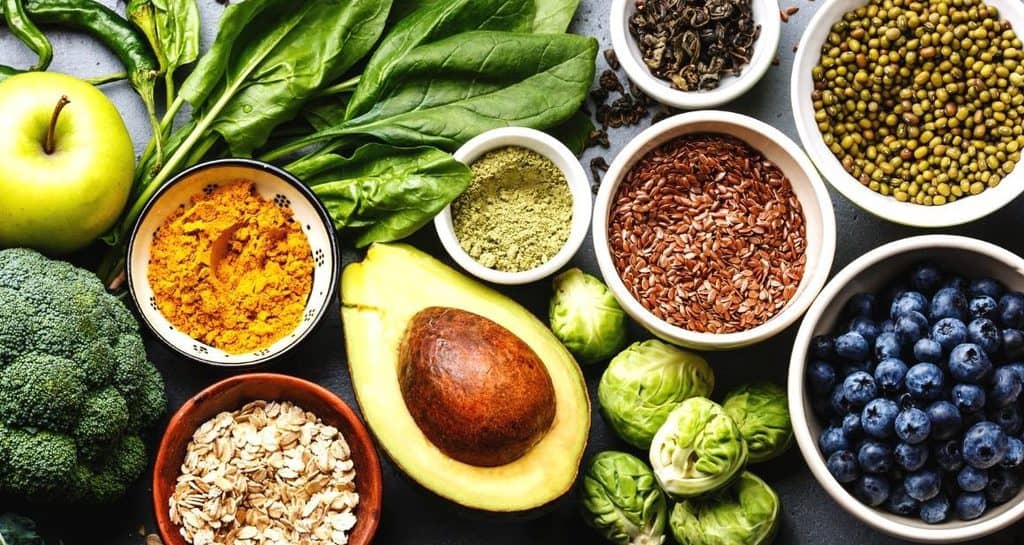Perhaps more than any other plant molecule, polyphenols have become associated with the term “superfoods.”
They are often dubbed “antioxidants,” and we are told to consume as much of them as possible.
It seems that every day, another company comes out with a supposedly magical supplement, juice, or powder with bold claims of decreased inflammation and longevity as it touts its robust polyphenol content.
The term “polyphenol” refers to the molecular structure of a class of organic compounds. “Poly” means many, and “phenol” refers to the aromatic (multiple double-bonds between carbons) ring structure with an OH group attached.
In the plant kingdom, polyphenols serve unique roles as phytoalexins and as plant pigments.
Phytoalexins are weapons that plants marshal against attacking organisms like fungi, insects, or animals.
Resveratrol, for instance, is produced as a defense molecule in the skin of grapes and other plants when they are attacked by pesky fungi.
Intriguingly, but not surprisingly, humans and animals do not make molecules that are polyphenolic in structure within their biochemistry.
This is another illustration of the differences in the way that plants and humans work at a biochemical level.
Polyphenols are like Porsche parts, which don’t work in our human Tesla bodies, and the Tesla factory surely doesn’t make Porsche parts.
As an aside, the whole premise that molecules that independently evolved in plants would somehow be beneficial in humans sounds a bit far-fetched to me.
It would be highly unlikely for one molecule, let alone thousands of molecules, produced during plant evolution to truly be beneficial in humans after our evolutionary path diverged from theirs 1.5 billion years ago when we were little more than a single-celled blob.
Imagine the odds against this!
If polyphenols are made by plants, for plants, why are we inundated with the notion of them as such magical compounds?
The vast majority of the data suggesting benefits from polyphenols is derived from epidemiological research.
But epidemiology doesn’t actually involve any sort of intervention.
The studies are no more than population diet surveys followed by observations of health outcomes.
Although there are many epidemiology studies that show some degree of correlation between consumption of fruits and vegetables containing polyphenols and improved health outcomes, many interventional studies don’t reveal any iota of benefit.
We must not make the mistake of confusing correlation with causation.
Epidemiology studies don’t tell us anything about causation but instead leave us to hypothesize regarding possible causal connections.
In a perfect world, epidemiology studies would be used to generate hypotheses about how diet and health outcomes might be related, which would then be tested with interventional studies.
Unfortunately, interventional studies in the world of nutrition are seldom done. They are quite expensive and work intensive, and who’s going to profit from telling people to eat differently?
Most of the interventional research that is done within medicine today is funded by the pharmaceutical companies who stand to profit handsomely if their molecule du jour generates compelling data.
If an interventional study shows that meat is good for you, cattle farmers aren’t exactly going to get rich.
They might sell a few more rib eyes here and there, but their profits won’t be anything like the billions garnered by pharma when it strikes molecular gold.
The good news is that there have been some interventional trials done with polyphenol-rich fruits and vegetables.
Many of these trials have failed to show benefits—in terms of inflammation, DNA damage, or immunologic markers—from the inclusion of lots of fruits and vegetables in a diet, and in one case, this intervention was harmful.
How can this be the case? How can many epidemiological studies show correlation between fruit and vegetable consumption and improved health outcomes, but the interventional trials clearly suggest the opposite?
This scenario is actually quite common.
When they are put to the test in interventional studies, hypotheses generated from epidemiological studies are wrong more often than they are right.
In the case of fruits and vegetables and health outcomes, there’s a big problem called “confounding” that invalidates much of this data.
Confounders come in many forms, but in this case, the most likely confounders are healthy user bias and unhealthy user bias.

And dive even deeper into these plant chemicals including resveratrol and the claim that it will help us live longer…
Curcumin and the promise that this molecule will banish inflammation from our bodies…
And flavonoids found in soy, quercetin, tannins, and the polyphenols found in coffee, and illustrate why they aren’t the fairy dust we’ve been told they are!
by Paul Saladino M.D. Carnivore Code radicalhealth@heartandsoil.co
